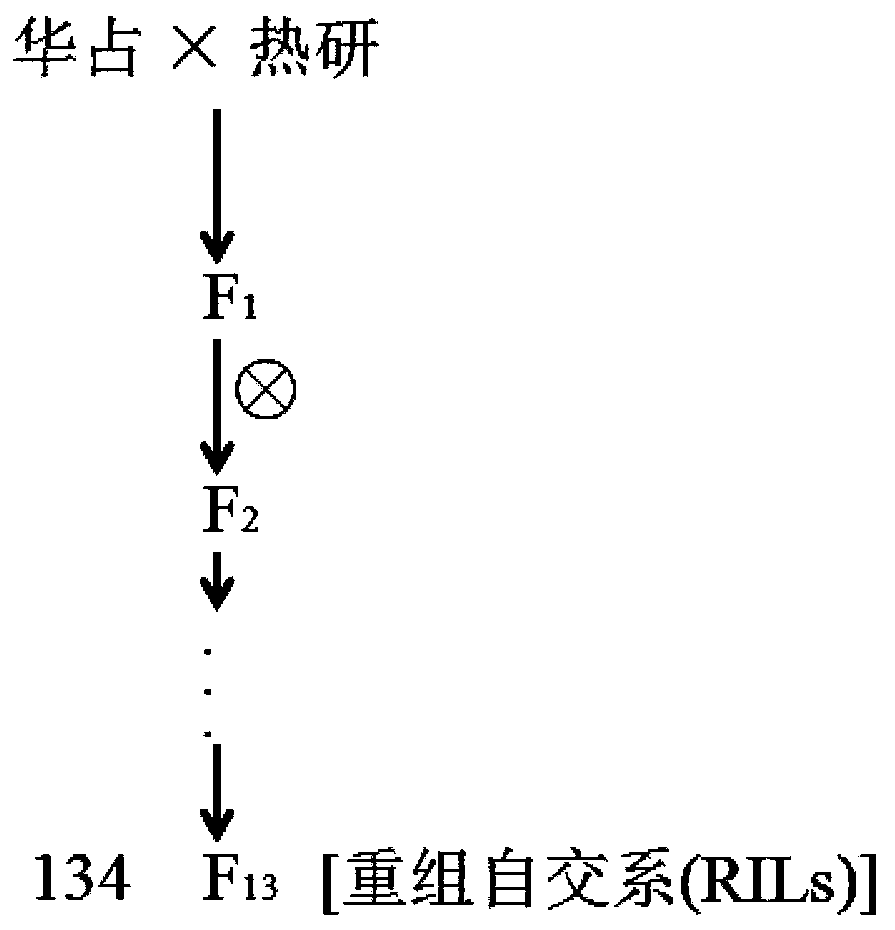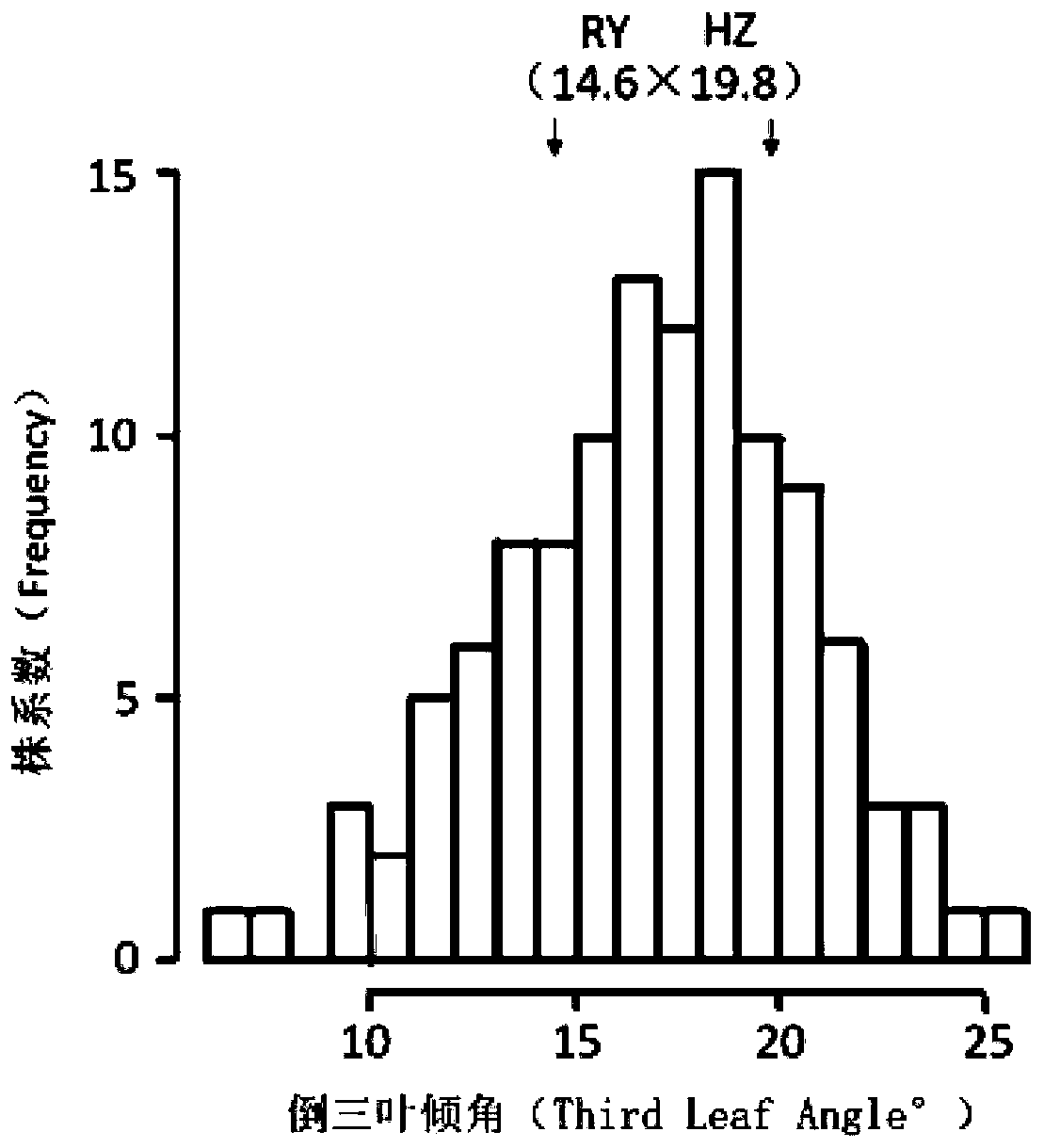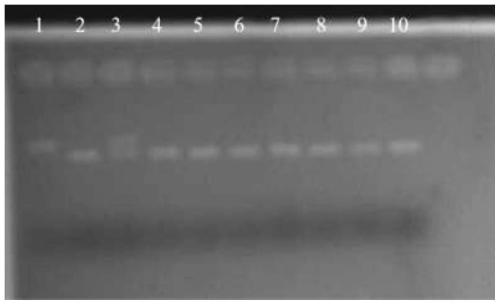Molecular marker of major QTL, qTLA-9 for regulating angle of tilt of paddy rice leaves, and application thereof
A technology of molecular markers and leaf inclination angle, which is applied in the field of rice breeding and molecular biology, can solve the problem of incomplete understanding of genes related to the regulation of rice leaf inclination angle, and achieve the effects of improving breeding efficiency, high map density, and high LOD value
- Summary
- Abstract
- Description
- Claims
- Application Information
AI Technical Summary
Problems solved by technology
Method used
Image
Examples
Embodiment 1
[0045] Embodiment 1, acquisition of experimental materials
[0046] The rice variety Huazhan has a relatively large leaf inclination angle. Huazhan was used as the donor parent and the local rice variety Reyan was used as the recipient parent to construct RILs by crossing. , until the phenotypes of offspring strains do not segregate), and finally 134 stable genetic strains were obtained (F13, all strains were phenotypically stable), such as figure 1 .
[0047] Select 60 seeds (F13) of the parent and each strain, soak the seeds for 2 days after surface disinfection, wrap them in a moist towel, put them in a 37°C incubator for 48 hours, and select the seeds with consistent dew and whiteness for sowing. After 30 days, the parents with similar growth conditions and 24 seedlings of each line were selected for transplantation. All rice materials were planted in the experimental field of the School of Chemistry, Zhejiang Normal University, Jinhua City, Zhejiang Province, and were ma...
Embodiment 2
[0048] Embodiment 2, leaf inclination angle data measurement
[0049] At the tillering stage, 5 tillers were randomly selected from each line, and the vertical inclination angles between the veins and stems of the three leaves were measured with a protractor. Record the data of each group and calculate the average value.
[0050] figure 2 Among them, RY represents the rice variety Reyan, and HZ represents the rice variety Huazhan; according to figure 2 It can be known that the data of the inclination angle of the inverted trefoil showed a continuous normal distribution and a wide range, and there were many super-parents, showing the genetic characteristics of quantitative traits.
Embodiment 3
[0051] Embodiment 3, QTL location analysis
[0052] Using the genetic map constructed by a large number of SNP and Indel markers developed by the laboratory in the early stage, the quantitative trait locus (QTL) interval mapping of the inclination angle of the rice leaf is carried out, and the markers and quantitative trait tables of the entire genome are analyzed by R-QTL professional software QTLs were mapped to corresponding positions in the linkage group one by one, and their genetic effects were estimated. If a molecular marker with LOD>2 is detected, it is considered that there is a QTL between the two markers corresponding to the highest LOD value ( image 3 ). In the whole genome, we found a major QTL located between the Indel Tal-1 marker and the Indel Tal-2 marker on chromosome 9, with a genetic distance of 74.80cM-98.33cM and a physical distance of 17448080bp-22938953bp, and Named qTLA-9 ( Figure 4 ).
PUM
 Login to View More
Login to View More Abstract
Description
Claims
Application Information
 Login to View More
Login to View More - R&D
- Intellectual Property
- Life Sciences
- Materials
- Tech Scout
- Unparalleled Data Quality
- Higher Quality Content
- 60% Fewer Hallucinations
Browse by: Latest US Patents, China's latest patents, Technical Efficacy Thesaurus, Application Domain, Technology Topic, Popular Technical Reports.
© 2025 PatSnap. All rights reserved.Legal|Privacy policy|Modern Slavery Act Transparency Statement|Sitemap|About US| Contact US: help@patsnap.com



